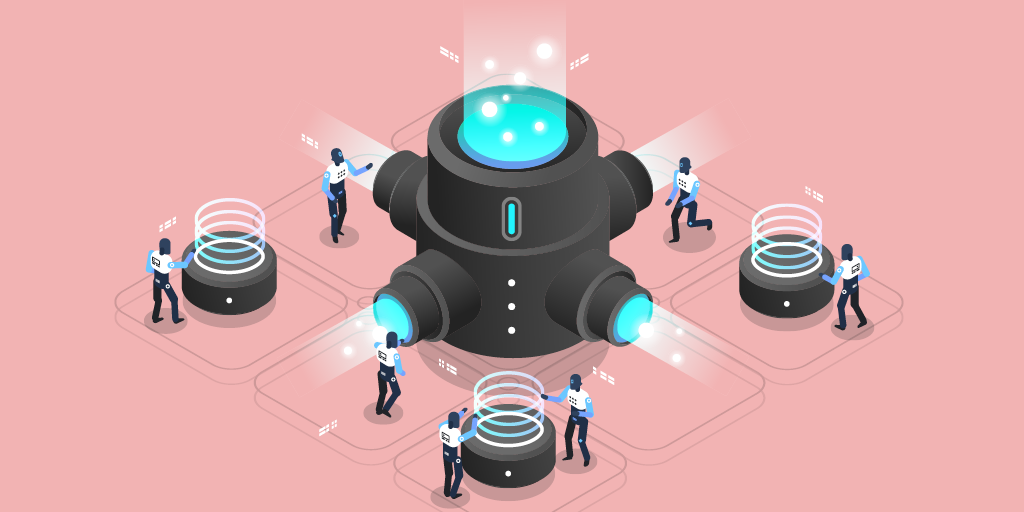Time for Digital Twins In Procurement?

A digital twin simulates a supply chain to provide visibility and improve decision-making and risk management. It’s not quite like a video game, but it’s close. The twin allows you to play out “what if” scenarios like rising inflation or a shipping strike through a virtual representation of connected processes.
They can have a ‘transformational impact,’ Gartner says, on a supply chain’s capabilities for managing demand and improving forecast accuracy. The twin helps integrate supply and demand planning based on customer behaviours. A digital twin typically encompasses the entire supply chain, including procurement activities.
We’ll look at how a digital twin benefits supply chain and procurement operations for improved situational awareness and business decision-making.
They are created using a combination of real-world data, sensor information, and digital modeling techniques.
“Basically, they’re the reflections of physical entities, offering us a portal into a parallel universe of possibilities,’ said Vikas Kaushik, founder and CEO of TechAhead Corp, a digital twin developer. ‘In this ethereal realm, we can tinker, predict, and explore, all while keeping our feet firmly planted in the material world.’
Every product or item you need has a virtual twin that mirrors it in the digital world. These digital twins track the actual items from when they’re made to when they reach your loading dock or doorstep. They help companies predict when something might go wrong, like a machine breaking down or a delayed shipment. It’s like having a crystal ball for your supply chain, ensuring everything runs smoothly, saving time and money, and ensuring you get what you need when you need it.
Better Forecasting and Demand Planning
The primary benefit of digital twins is a more flexible and responsive approach to procurement.
The highly detailed simulations of the entire supply chain utilise real-time data to anticipate potential disruptions in supply chain dynamics. The ability to play with scenarios in a sandbox environment is one of the most powerful aspects of digital twins. Organizations can prepare for the worst case and develop and test action plans to address abnormal situations.
A digital twin system is usually built with geographic information system (GIS) data so an organization can map its supply chain down to the tertiary supplier level, said Professor Margaret Kidd, program director and instructional associate professor for Supply Chain & Logistics at the University of Houston.
For example, you may already know that your company has 20 suppliers in Southern China. A digital twin system can identify risks, such as how you respond when a flood or earthquake strikes those 20 suppliers.
‘With the digital twin, you can figure out how you’re going to negotiate around the natural disaster,’ Kidd said. ‘If you’re bringing raw goods or parts into your supply chain, having a digital twin of the global transportation network will be very relevant for risk management.’
With the insights from a digital twin, procurement teams are enabled to identify potential risks and opportunities immediately. Digital twins provide early alerts when there is a sudden rise in demand or a breakdown in the supply chain.
They can assess enormous volumes of data and simulate numerous scenarios using advanced analytics and machine learning approaches, providing procurement teams with essential insights into changing market dynamics. These insights enable teams to forecast demand correctly, anticipate market trends, and modify procurement plans accordingly.
‘This invaluable situational awareness empowers procurement professionals to make informed decisions promptly,’ said Henrik Park, General Manager at Marketin.no and a digital twin designer.
From a sourcing and procurement perspective, digital twins facilitate the tracking and monitoring of spending with diverse suppliers, helping procurement professionals identify areas for improvement in supplier diversity initiatives. They allow you to incorporate supplier pricing and volume discounts, lead times, production capacities, payment terms, etc. to ascertain the most economical and least risky sourcing strategy.
A procurement team can use digital twins to:
- Simulate the potential impact of diversifying the supplier base, including assessing benefits such as risk mitigation, innovation and cost-efficiency.
- Simplifies accurate tracking and transparent reporting of supplier diversity metrics, ensuring compliance with supplier diversity programs and regulatory requirements.
- Make significant contributions to sustainability efforts throughout the supply chain by optimizing resource utilization, reducing waste, and encouraging responsible practices.
- Using data-driven simulation modeling, digital twins calculate carbon emissions from factory production to inbound and outbound transportation.
Other benefits include:
- Improved decision-making through data-driven insights.
- Enhanced customer satisfaction by ensuring product availability and timely delivery.
- Cost reduction through streamlined processes and optimised resource allocation.
- Competitive advantage by fostering agility and responsiveness.
- Enhanced regulatory compliance by accurately tracking and reporting critical metrics.
- Transparency across the supply chain, which enables accountability and trust-building.
Transformational Power
‘Digital twins have the power to transform global procurement by making things more efficient, visible and smarter,’ said Adam Terry, Managing Director of Business Transformation practice at FTI Consulting. “They help monitor suppliers’ performance in real-time, so you can trust their performance, providing real-time data to make better calls and negotiate contracts. They can also be used to foster closer relationships with your suppliers through data exchange.’
Think of digital twin like a fortune teller, predicting what you’ll need for procurement and helping you avoid bumps in the road. They’re also great at helping to keep inventory in check, which saves money. When it comes to sustainability, digital twins encourage responsible procurement practices and reduce the environmental footprint.
You can tweak digital twins to fit your industry and company like a glove. So, in a nutshell, adopting digital twins in procurement is like having a super-smart, all-in-one assistant that streamlines everything, helps you make better choices and champions sustainability and resilience. It’s like having the upper hand in a complex procurement world.